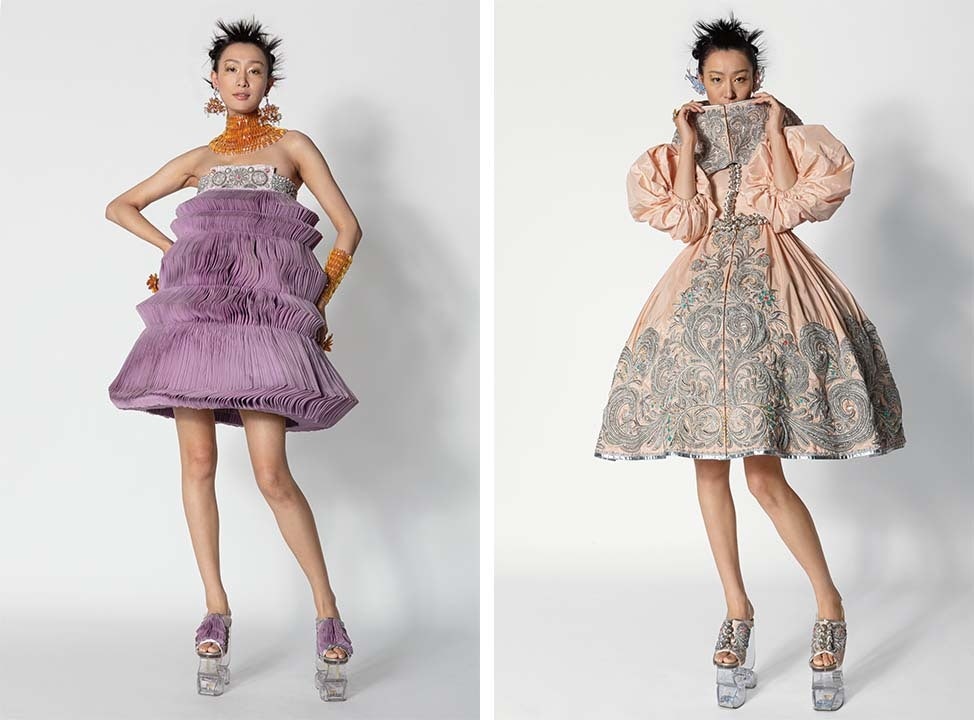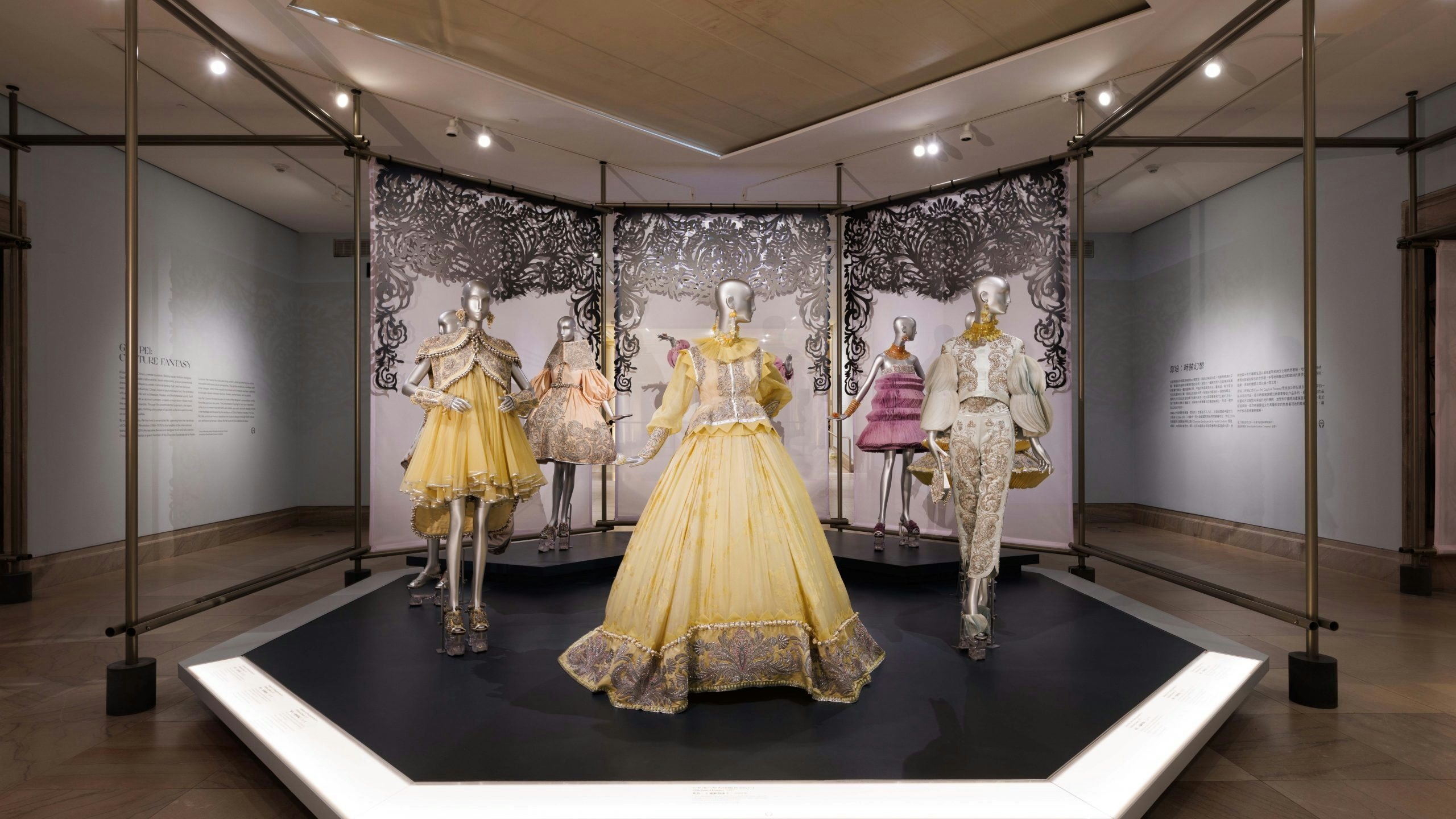In the world of haute couture, Guo Pei holds the crown. One of China’s most prolific designers, she has dressed celebrities — who can forget Rihanna’s dramatic cape gown at the Met Gala? — distinguished ladies, and even members of royalty. Her creations take cues from China’s imperial past and European court life, becoming walking canvases of history, mythology, and the artist’s own fantastical imagination.
Now, many of these pieces (minus the yellow cape) can be viewed in person. From April 16 to September 5, the Legion of Honor art museum in San Francisco is hosting the first comprehensive exhibition of Guo Pei’s work. Titled Guo Pei: Couture Fantasy, the presentation features more than 80 ensembles from the past two decades, highlighting her most important fashion collections shown on Beijing and Paris runways.
“I would prefer that people get to know the real me through all my works with a more comprehensive dimension rather than a particular piece,” Guo Pei told Jing Daily, when asked about her favorite design on display. “Because each artist's creation shows a different side, you have to discover the combined feelings of all the works to understand the artist.”
Understanding the famed couturier starts on the Legion of Honor’s main floor, where visitors can marvel at show-stoppers such as the “Phoenix” gown from her Legend of the Dragon collection or the majestic gold-embroidered “Da Jin” ensemble from her Samsara collection. Elsewhere, the “Porcelain” dress from her One Thousand and Two Nights collection is housed in a gallery that also showcases Chinese export art and European chinoiserie, highlighting the iconographic references used in her clothing.
[wpgallery id="130702"]
Guo Pei's dresses are set against the museum's permanent collection of French and Italian artwork (swipe left).
“Amidst our collection of European art, Pei’s designs encourage our visitors to consider the rich historical ties between China and the West,” stated Thomas P. Campbell, Director and CEO of the Fine Arts Museums of San Francisco.
Downstairs, guests can continue exploring Guo Pei’s key runway collections, many of which reimagine traditional Chinese aesthetics. An Amazing Journey in a Childhood Dream, for example, translates Chinese theater and costume design into tightly pleated, origami-like dresses, reminiscent of the toys Guo played with during the Cultural Revolution. A more recent body of work, the East Palace collection, draws inspiration from Qing Dynasty court dress, boasting pale gold embroidery of imperial dragons, birds, and flowers.

“The attention that my works have received in various museums around the world makes me feel that people are not only concerned about an artist's work but also about the context in which he or she grew up,” Guo Pei said. “So my work represents not only myself but also the influence of China on me. Now, China has become more open and tolerant, which is the confidence of the culture and the people.”
Indeed, China’s fashion landscape is shifting thanks to homegrown designers like Guo Pei. After graduating from the Beijing School of Industrial Fashion Design, she launched her own label and atelier, Rose Studio, in 1997, which employs nearly 500 skilled artisans today. In 2015, she became the second Chinese member of the Chambre Syndicale de la Haute Couture, allowing her to show on the Paris Haute Couture Week calendar. Since then, she has been named one of the most influential people shaping the global fashion industry and recently made her Web3 debut at Metaverse Fashion Week.
But for someone who is pushing the industry forward, she is surprisingly less concerned about its future. As she puts it, “[haute couture] will not disappear because people’s pursuit and desire for beauty will never change.” At the same time, “it will also not be the common goal of people, so haute couture is difficult to be popularized.”
Perhaps that’s why she wrote that “haute couture is not made for commercial gain, but more for a kind of inner quest, a satisfaction of our spiritual being.” And it is in pursuit of this inner satisfaction that she has undoubtedly conquered the global stage.

